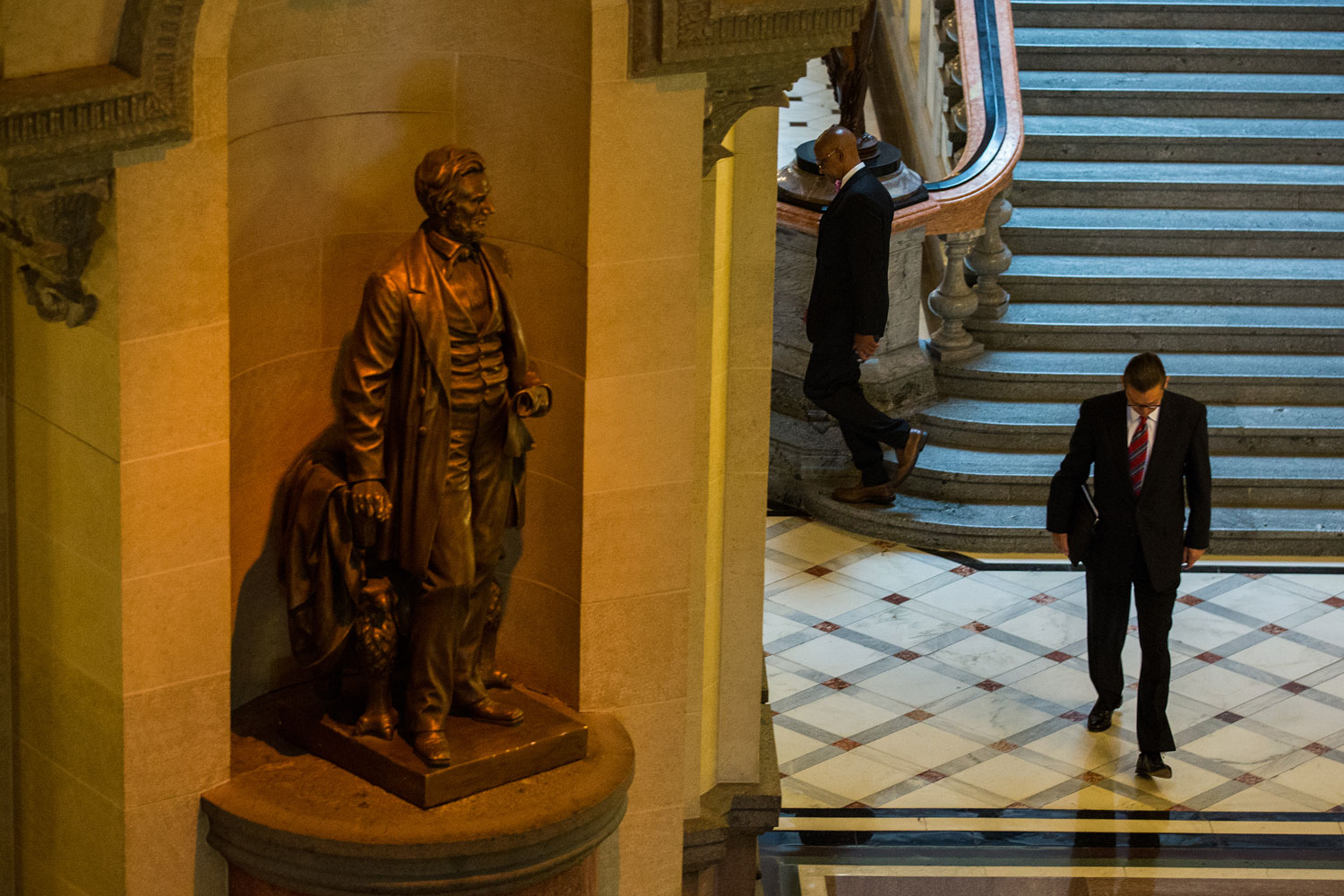Perhaps the last way you want to start the morning is reading about why Illinois is in a fiscally perilous situation. Lots of smart people have written about it; the answer tends to be similar; and the answer never gets better, easier, or more encouraging.
And in that sense, there's nothing particularly new about the conclusions Thomas Walstrum, a business economist for the Chicago Federal Reserve, comes to in "The Illinois budget crisis in context: A history of poor fiscal performance." (Including the title, which doesn't exactly jump off the page.)
But the numbers he uses to do it are genuinely interesting, and they add depth to why a solution is so difficult to come by.
Here's the gist:
I show that Illinois used to be a relatively low-expenditure, low-revenue state. However, unlike the spending of the typical U.S. state, starting in the mid-1990s, Illinois’s spending consistently outpaced its revenues (which have stayed low). In particular, the accumulation of pension liabilities has become a major source of Illinois’s fiscal problems.
And that's basically it. At the highest level of analysis, it's really that simple. But Walstrum had to do some math to get there. And it's pretty striking.

"GSP" means Gross State Product; here's a basic definition. These are charts, in short, that compare state and local government spending to a state's economy. What Walstrum does here is treat the yearly change in pension liabilities as an expenditure, treating future payments as if they were being made right now. The chart on the left is government spending minus that, essentially what the government is paying now for work being done now; Illinois comes in below average. It's not terribly surprising that the state would be below average, because it has a relatively low government-employee headcount, which has been declining. The chart on the right simply adds in the yearly change in pension liabilities as an expenditure. Because Illinois's pension liabilities are so high, the gap between Illinois and other states is almost zero, "indicating that it is no longer appropriate to consider Illinois a low-expenditure state."
So that's the expenditures side of the fiscal coin. Now, the revenues side:

Illinois was hit very hard by the housing bubble and recession because of its dependency on property taxes, a system that made Illinois particularly vulnerable. Illinois was already a low-revenue state, and its revenues plummeted, at a time when it was ceasing to be a low-spending state.
Now, put the two together (which includes pension liabilities as expenditures):

In short, since just before 1990, Illinois has been spending more than it's taken in, as spending has been more than 100 percent of revenues, while the average state has not consistently spent more than it's taken in during that same period of time.
As Walstrum points out, this is a bad trend. "As a low-expenditure state (prior to more recent times), Illinois could also afford to be a relatively low-revenue state and still maintain a balanced budget," Walstrum writes. "However… it becomes clear that while the gap in expenditures between the average U.S. state and Illinois has shrunk to close to zero, the gap in revenues has only shrunk a little."
But another way to look at it is that Illinois wasn't really a low-expenditure state, or at least not as low-expenditure as it looked; it was an average-expenditure state, or something like it, only it deferred those expenditures (in particular, pension payments) to the future, where they are now all but impossible to cut. So now a low-current-expenditure state with low revenues has to lower expenditures even further, or raise revenues. Raising revenues might be more politically palatable if it went to new, better services, but most likely it would have to be split between paying for past services in the form of paying down pension liabilities, and, at best, maintaining current services.
And we basically know all of this. But sometimes by looking at what we know from different angles, the problem, and the solutions, become more clear.



